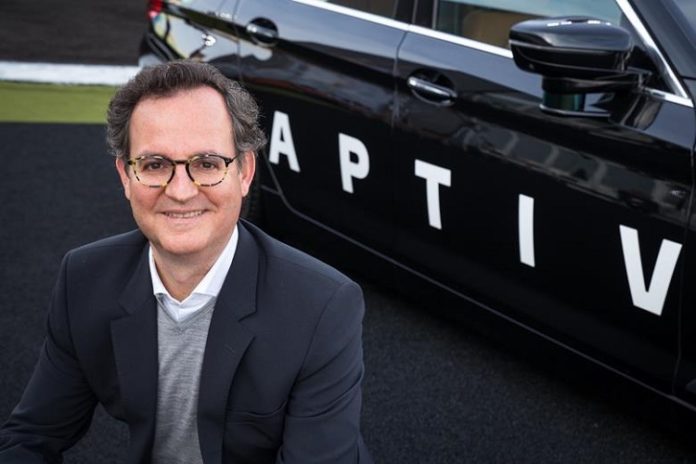The European Union reached a decision to implement tougher safety regulations, which will have implications for vehicle connectivity technology. The so-called General Safety Regulation (GSR) still requires final approval by ministers of the 28 EU member states, but many automotive suppliers expect that, once it takes effect in 2022, advanced safety technology will quickly spread from mostly premium vehicles today to lower market segments as well.
In an interview with automotive IT International, David Paja, President, Advanced Safety and User Experience, at automotive supplier Aptiv, discussed the impact of the EU rules and the role of safety technologies in a changing industry. Paja’s division makes components and systems for infotainment and connectivity, body controls and security systems, as well as active and passive safety electronics and autonomous driving software.
- With autonomous vehicles likely to become the norm in the next 20 years or so, how long will we still need active safety technology? After all, these systems are designed to compensate for the shortcomings of a driver, who may not be at the wheel a few years from now?
In many ways these are building blocks. In robo-taxis you won’t need these systems, but in Level 3 vehicles the driver still takes over control once in a while. Driver-assistance systems such as radar and cameras are building blocks toward full automated solutions. There will be a lot of re-use of these technologies in fully automated vehicles. Also, bear in mind that not all vehicles will become autonomous in the near future. From a business-case point of view, it makes more sense, for example, to automate a taxi than a privately owned vehicle.
2. Is regulation a big factor in the adoption of safety technology?
As a technology provider, we tend to stay away from judging political decisions. Instead, we focus on the technology. From our point of view, many technologies exist in premium vehicles that can be deployed in volume cars as well. Europe tends to be slightly ahead when it comes to regulation and that has been driving the adoption of driver assistance features at a bit faster pace than elsewhere, but it’s not a big difference. With the new Brussels regulations, we’re likely to see a slight acceleration in adoption.
3. Automotive safety is a good area to be in for an automotive supplier.
We started investing in this technology 20 years ago and there was no big revenue back then. But we’ve seen a big adoption curve in the last five years. Aptiv is committed to the space and we believe safety technologies bring value to the end customers. We’ve seen 60 percent annual growth in active safety sales over the past two years and we’re at 1 billion dollars a year today. We expect our sales volume to double by 2022.
4. You have a broad portfolio of safety technologies. Can you pick a few that you think are more important than others?
First, I would mention our scalable Automated Driving Satellite Compute Platform, which allows you to do your computations away from the sensors in one safety controller. Each sensor now has its own control unit. Our technology is more cost-effective and allows the adoption of technology into entry-level vehicles. We first launched this on the Audi A8 three years ago and it’s now in several cars. The second technology is interior sensing and driver monitoring, which is being rolled out across BMW’s vehicle range. It’s important to know whether a driver is distracted and we can monitor, for example, the way his head is pointed or the direction of his gaze. We use machine learning here, too. It’s important because half a second of improved reaction time prevents 60% of all accidents.
5. You mentioned machine learning. How does Aptiv use artificial intelligence in general?
We are increasing our capabilities in this domain and use machine learning for sensing, classifying things and understanding what sensors see. We also use it in sensor fusion and in defining how a car should react to a particular situation.
6. How big is your team?
We have around 3,000 engineers in the active safety domain globally. That’s double the number two years ago. About 70% of those engineers are systems and software engineers, and that includes machine-learning and data experts.
7. Do you have trouble hiring people with the digital skills that you need?
There’s obviously a big fight for talent going one. It’s one of the reasons we acquired (autonomous driving specialist) nuTonomy in 2017. That company offered a way to get talent and expertise in robotics and more depth in machine learning.




